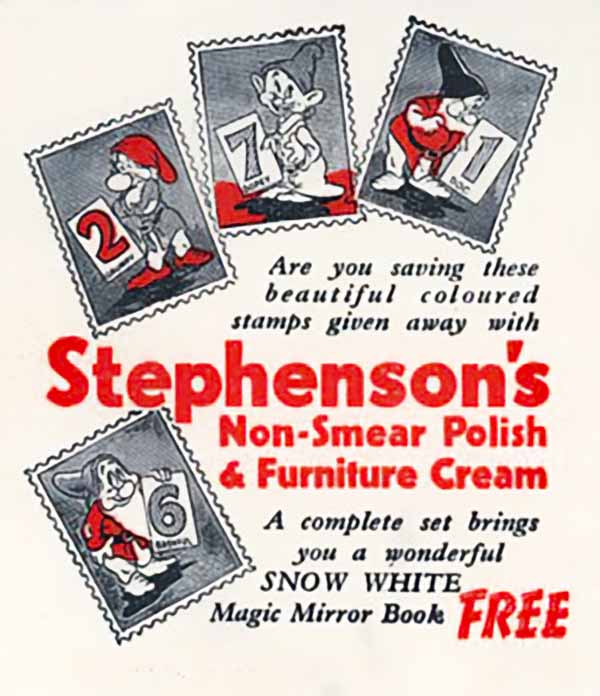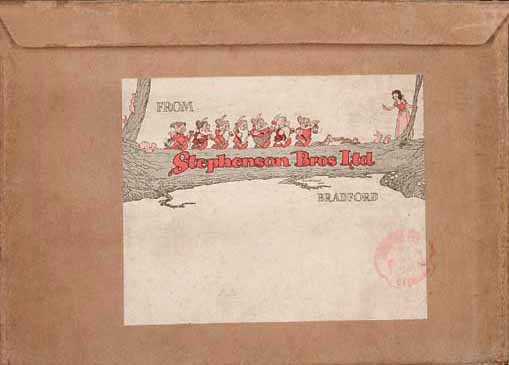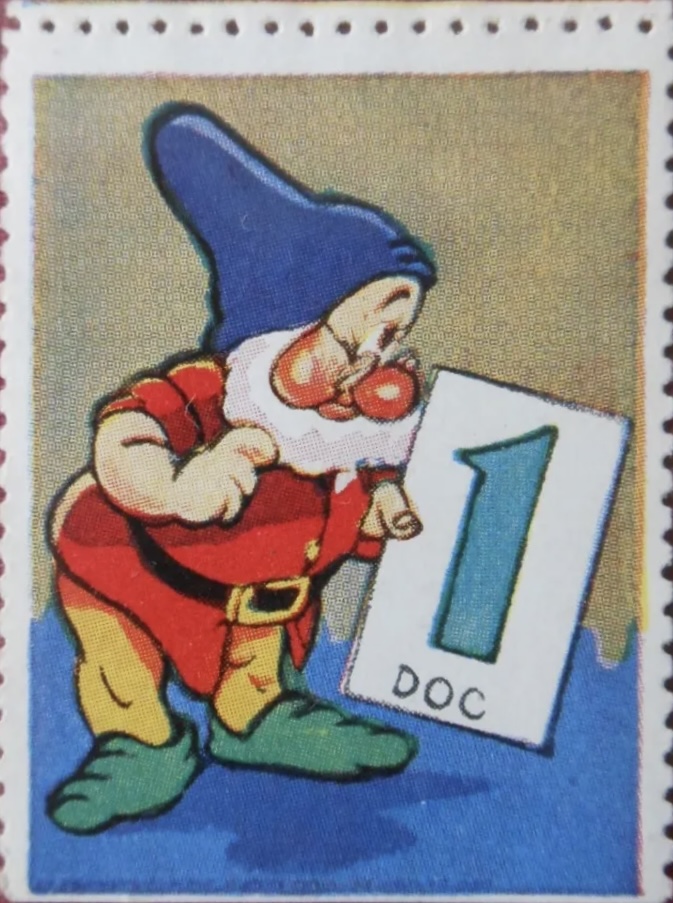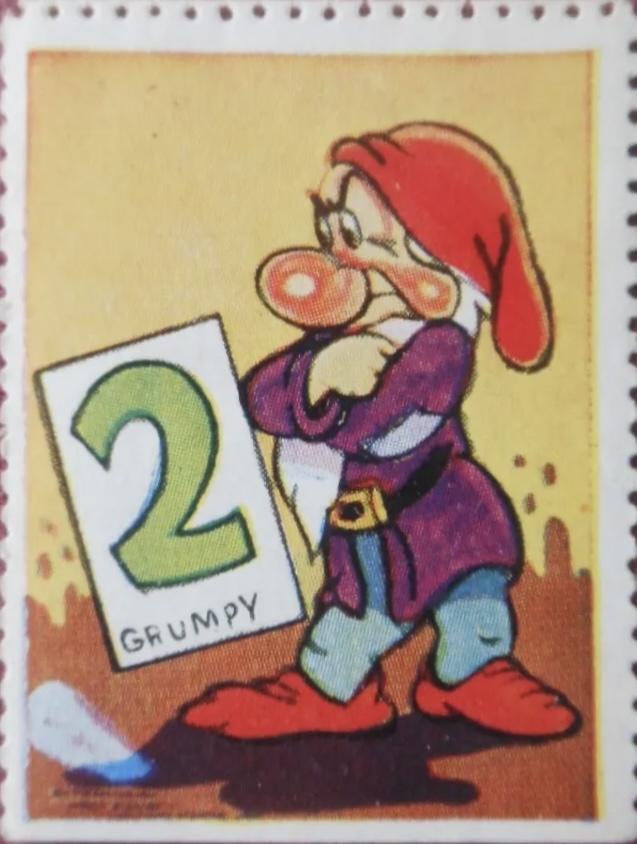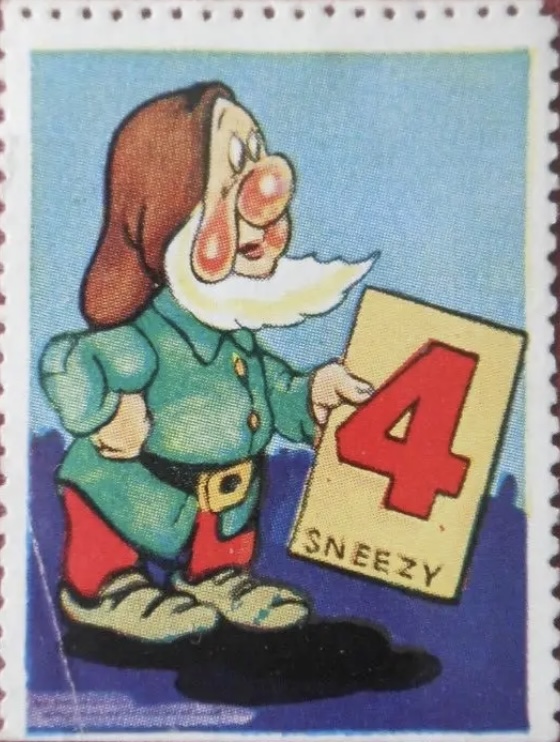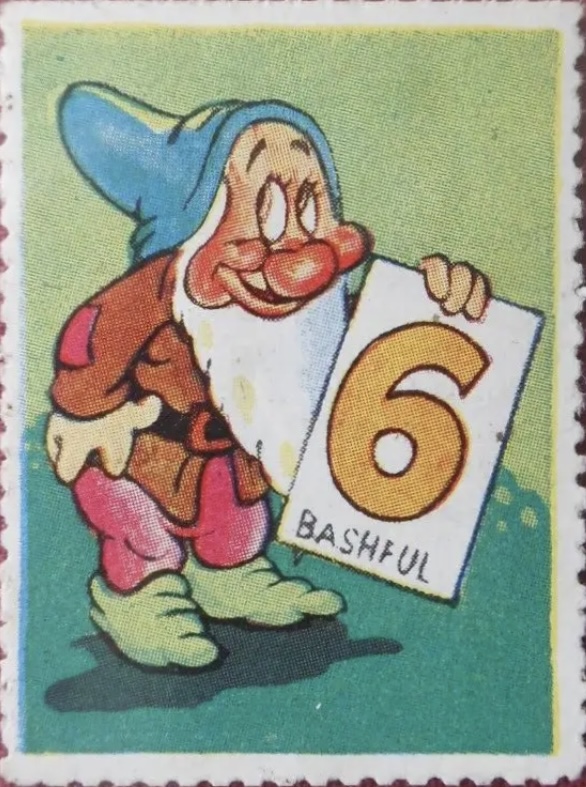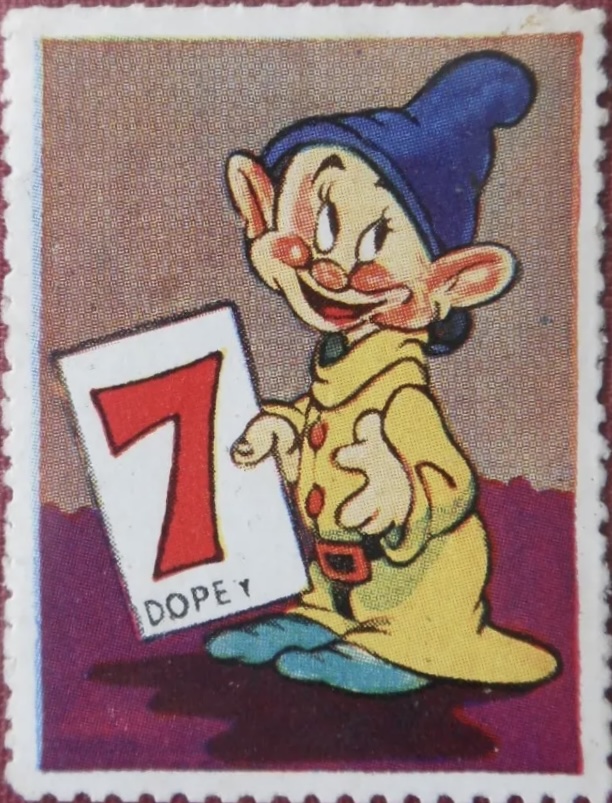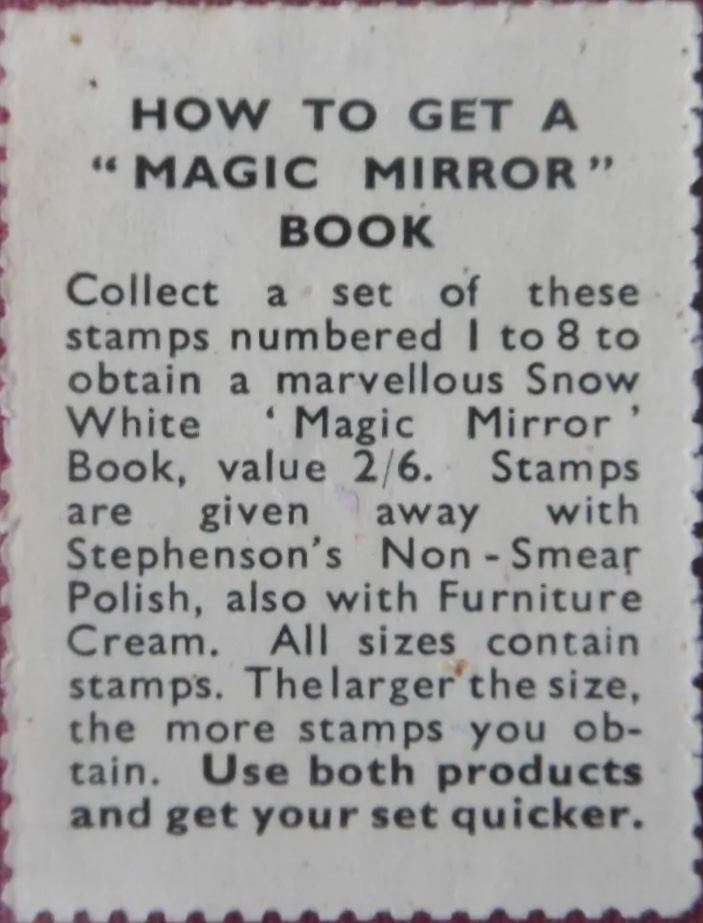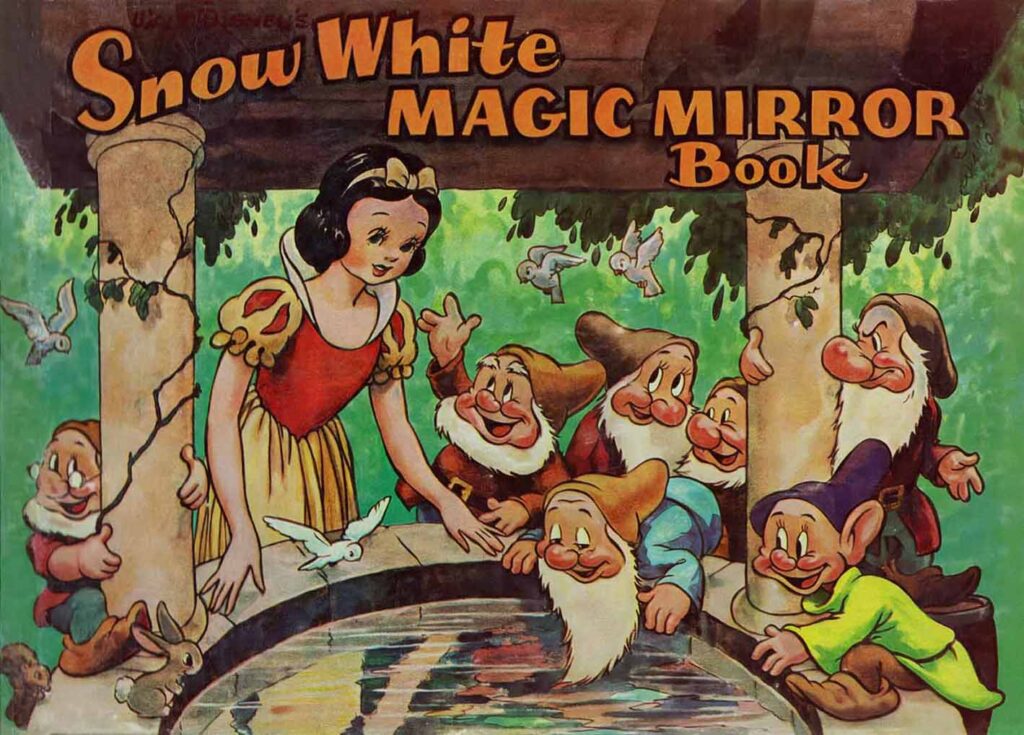
In 1939, this book was published in Great Britain by Dean & Son LTD. 41/43 Ludgate Hill, London, EC4, especially for Stephenson Bros. LTD, Bradford. This book was distributed free of charge by the Stephenson company, which manufactured furniture and floor polish. Stamps were included in their products (Furniture cream & non-smear polish) and one could eventually exchange them for the precious book, sent by mail. The first year was so successful that Stephenson published advertisements in April 1940 announcing the order of 50,000 additional books! For the occasion, the cardboard envelope in which the book was sent was subtly changed to lose its colors. The publication date is not printed on the book, but there are mailing cards stamped with at least March 27, 1939.
In the landscape format book of 25,5 x 18 cm, we are told on 64 pages and 19 chapters the story of Snow White and the Seven Dwarfs. No author is credited. The story includes scenes cut from the film such as the construction of the bed, and the spelling is indeed British (“colour”). It is therefore not an American text taken as is. The story is also interspersed with excerpts from the lyrics of the film’s songs. A funny detail: while a good part of the dialogues are reinvented, the Queen’s monologue (“Boil, cauldron, boil!”) is found in its entirety although the scene was cut from the film! For the author to have known this moment so precisely, the text must have been suggested or even written by a member of the studio, unless this fully finished scene was circulated in British copies. On the last page is an advertisement for Stephenson’s two flagship products that surfs on the song “Whistle as you work,” ideal for evoking the housekeeping facilitated by these products.
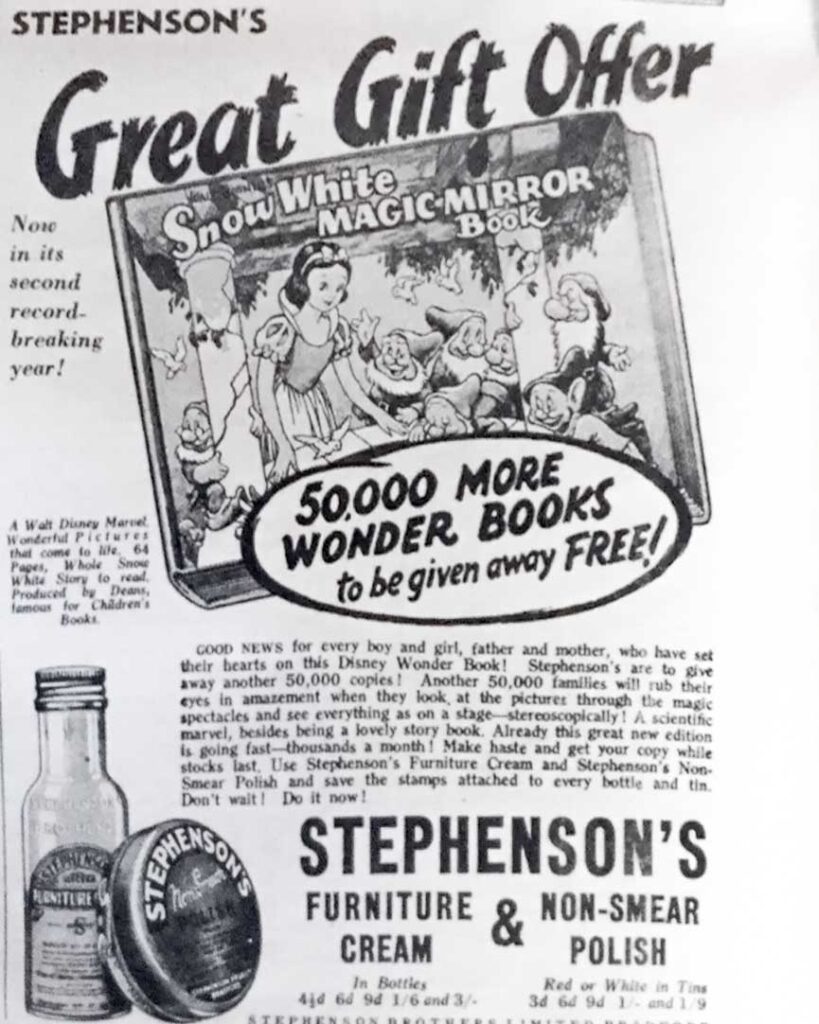
There are black-and-white illustrations throughout the book, simplified adaptations of Tom Wood’s, like those found in the French book Snow White and Her Animal Friends, some of which depict scenes cut from the movie. But the real attraction of this book is that it contains reproductions of three-dimensional photographs of six scenes from the film recreated with miniature sets and clay characters. This is the anaglyph process that requires wearing glasses with different colored lenses (red on the left, blue on the right), which are provided in a small pocket glued to the front of the book. An explanatory text explains how to use them and gives the procedure to follow to obtain other pairs by mail by sending stamps to Stephenson.

